Croatia Longboards Offer Cool and Green Around-Town Travel
ZAGREB November 19, 2020 - Noticeably bigger than a skateboard, longboards are a cool alternative to urban travel. Meet Croatia's first longboard manufacturers, Crushboards, whose eco-friendly products are healthier to use and way more stylish than other green options
You can walk around some European towns and cities and wonder just where the future is going to fit in. The narrow streets seem to want to accommodate only cars, with pedestrians demoted to the narrow edges. Zagreb isn't like that. Osijek and other towns and cities in Croatia are not like that.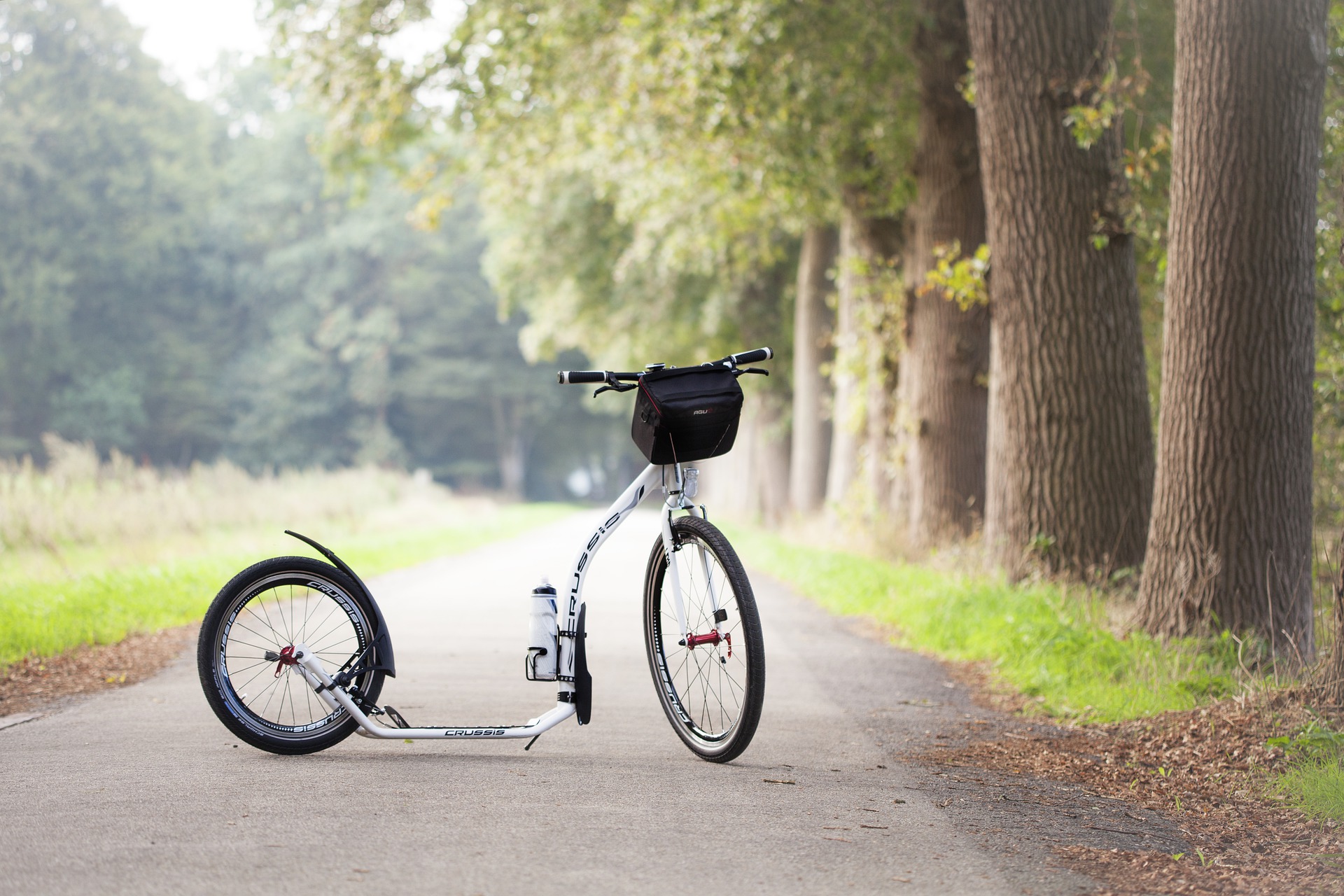 With 220 kilometres of dedicated cycle paths, the city of Zagreb and its residents have been quick to adopt the latest green-friendly ways of getting around the urban environment
With 220 kilometres of dedicated cycle paths, the city of Zagreb and its residents have been quick to adopt the latest green-friendly ways of getting around the urban environment
You only need take a glance at the generous cycle paths around Zagreb to see that this is a city that could easily take on the challenges of a future not reliant on fossil fuels – electric scooters, foldaway bikes, gyroscooters, electric skateboards and monowheels have joined bicycles on the streets of Zagreb as an easy means to get round the city. Could longboards be the next popular choice?
Started by three lifelong friends from Čakovec, Crushboards is the first company in the country to make Croatian longboards. Like a skateboard, only bigger, longboards are well suited to the urban environment of a city like Zagreb.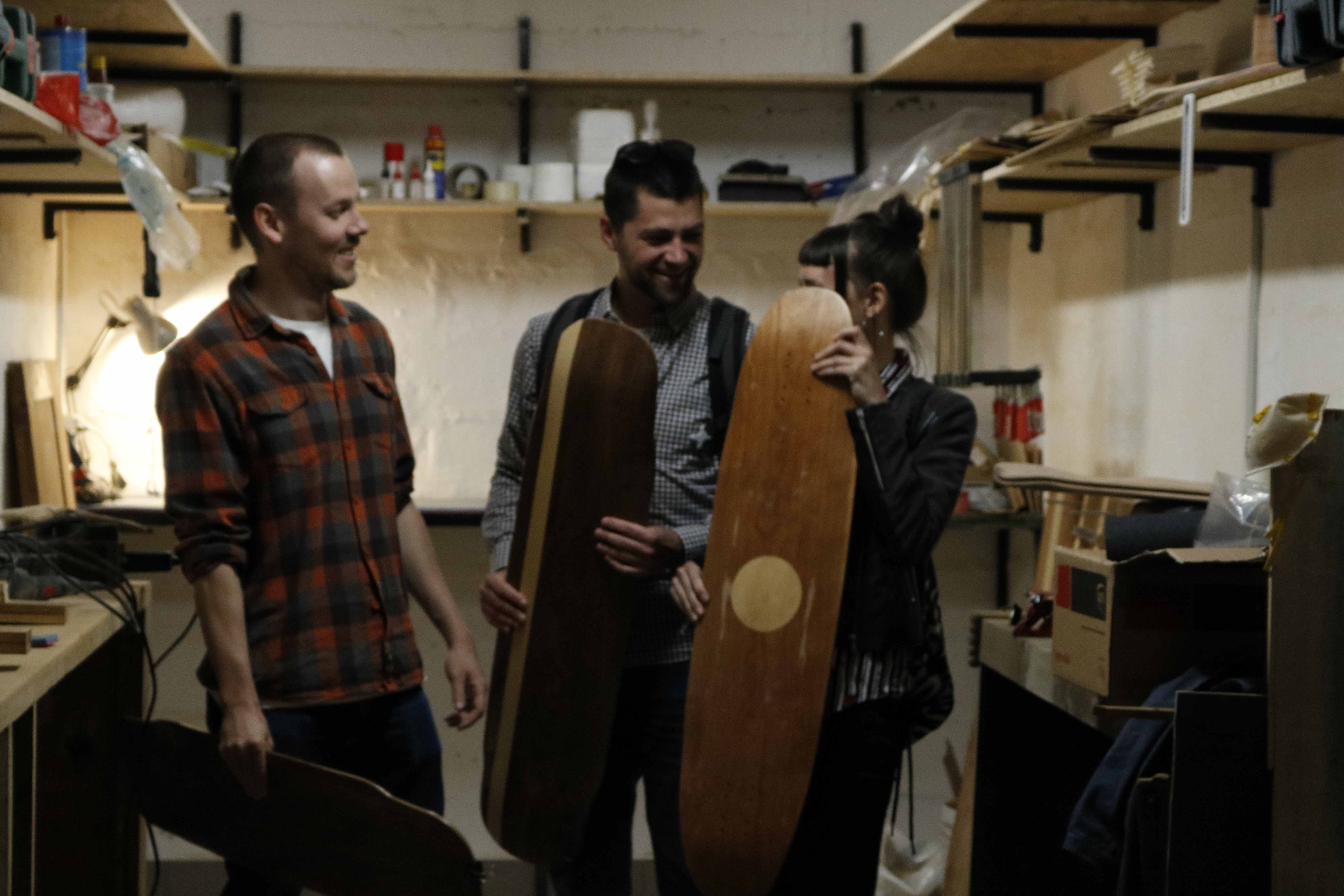 Čakovčani (l-r) Marko Hlebar, Davor Nikolic and Sanda Bogdan inside the Zagreb workshop of Crushboards © Vedran Pažin
Čakovčani (l-r) Marko Hlebar, Davor Nikolic and Sanda Bogdan inside the Zagreb workshop of Crushboards © Vedran Pažin
“This board is longer than a skateboard - 100 centimetres in length.,” Crushboards co-founder Marko Hlebar told TCN when we went to visit their workshop in Zagreb. He runs Crushboards with Davor Nikolic and Sanda Bogdan. “It's a bit heavier than a normal skateboard and uses different wheels. You can perform different tricks on each, dependant on the weight of the board, but the main thing for us is that a longboard is easier to ride on in the urban environment, in the city.” Practising on a Crushboards longboard inside a Zagreb park. The boards are intended as much for a regular inner-city commute as they are for such trickery
Practising on a Crushboards longboard inside a Zagreb park. The boards are intended as much for a regular inner-city commute as they are for such trickery
“The wheels are larger so it's easier to travel on one of these in the city than it is on a regular skateboard,” Marko tells us. “It's better for travelling to work or to appointments, your feet get less tired.”
Rather than being the latest cool evolution in skateboards, it turns out that longboards have been around for a long time. In fact, the very first skateboards that were made probably looked more like the hip, eco-friendly product made by Crushboards than a regular skateboard. Crushboards see their main product as part of a lifestyle choice - so, it's little surprise to learn they also make their own super-cool t-shirts and accessories
Crushboards see their main product as part of a lifestyle choice - so, it's little surprise to learn they also make their own super-cool t-shirts and accessories
Skateboards were first made in America during the 1940s as a practice board for surfers who were prevented from taking to the waves because of bad weather. But, during its infancy, there were few options available to manufacturers in the skateboarding industry – boards were made using rollerskate wheels, whose size demanded a board closer to that of today's longboard.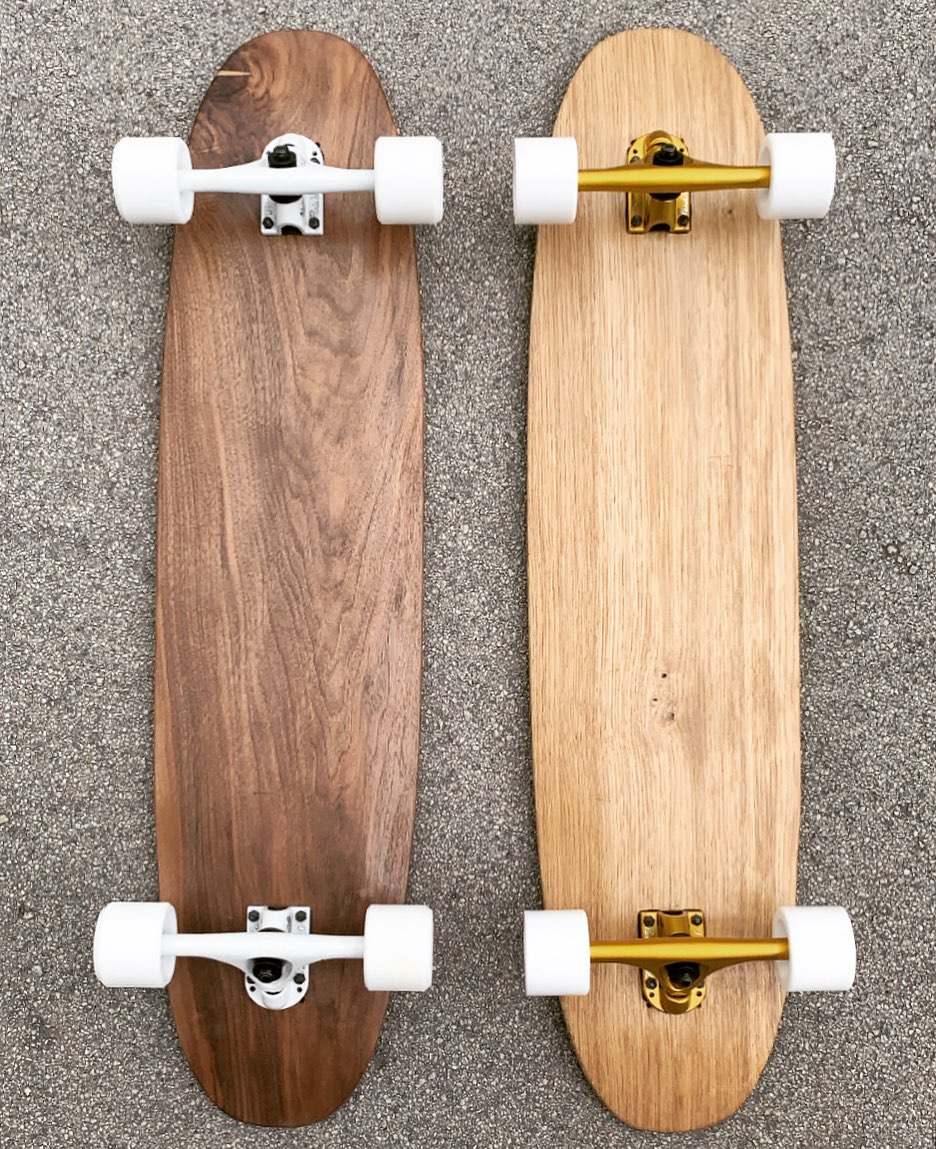
The longboard was, therefore, the first popular urban skateboard and remained so until the 1960s. It has fallen in and out of fashion ever since – the development of ultra-fast wheels saw them rise again in popularity due to them being well suited to downhill racing (the bigger board better absorbs the vibrations produced from speed). The relatively recent phenomenon of longboard dancing has also increased the boards' popularity in Asia.
Like regular skateboards, several different types and designs of longboard exist for different uses. The ones currently made by Crushboards are specifically designed for urban travel. Their boards are made using several thin layers of different materials, which strengthen and provide flexibility when glued together. They are finished on the top side with either oak or walnut, with the other layers holding cherry, teak, fibreglass, carbon, kevlar and two veneers. The wheels and their mounts are currently imported, but Crushboards hope to eventually source as much of the materials required from sustainable sources within Croatia.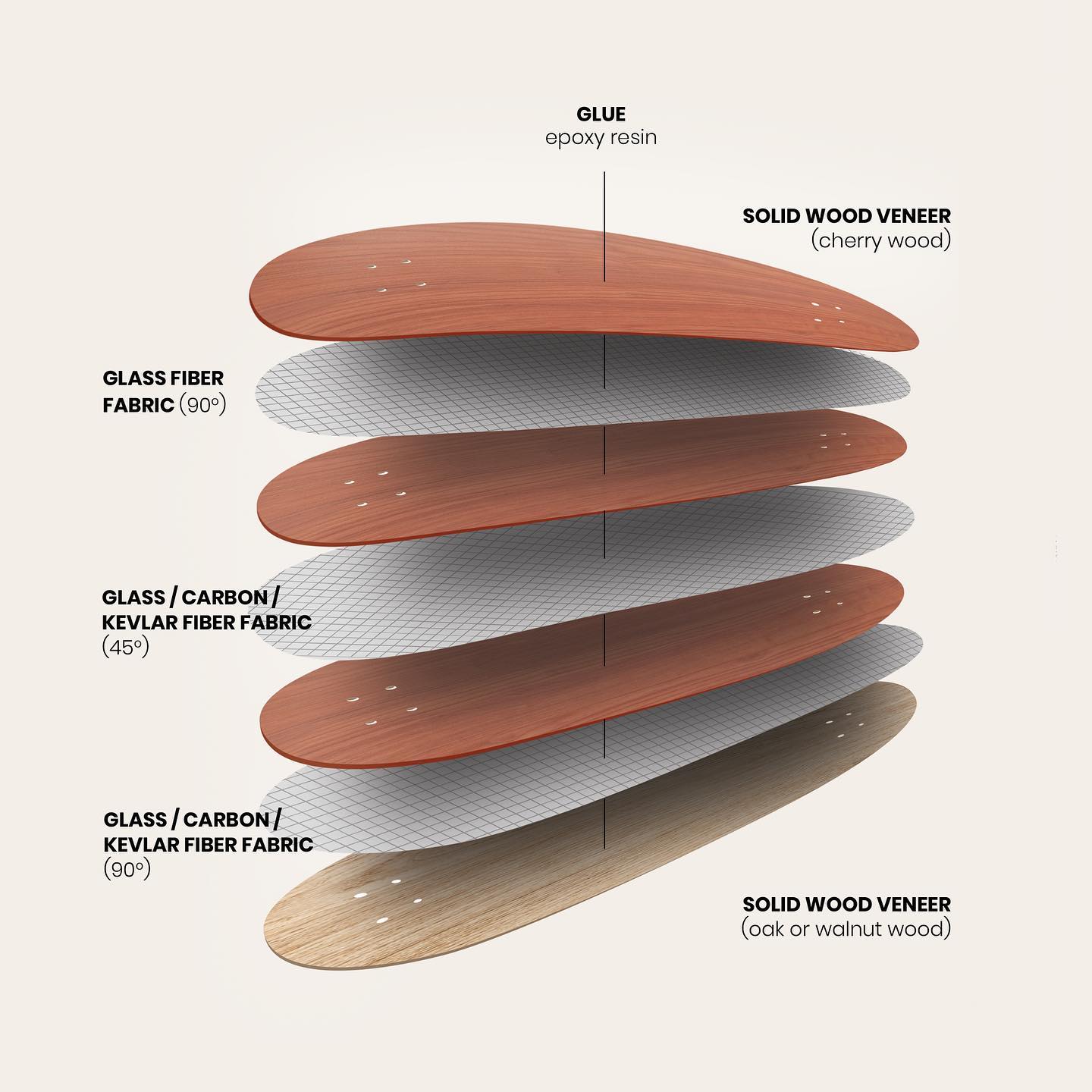 Inside one of Crushboards' longboards
Inside one of Crushboards' longboards
With 220 kilometres of cycle paths occurring throughout Zagreb, the Croatian capital is quick to embrace green modes of transport. Many Croatians are also health-conscious – a motorised scooter or skateboard might get around the city quickly, but they don't increase your exercise quota. Perhaps there's room on Zagreb's streets for these cool urban alternatives to the skateboards of our youths?
All uncredited photos © Crushboards
Zagreb Streets Friendly For Feet - It's European Car Free Day Tomorrow
ZAGREB, September 21, 2020 - Residents and visitors to the Croatian capital will tomorrow learn how Zagreb street life was historically, as the city centre banishes almost all vehicles for European Car Free Day
What would Zagreb's residents of the past think of the city if they saw it today? The Croatian capital's boundaries now extend many kilometres into the surroundings, the huge Sava river is no longer any impediment to travel. The people of the city now live on both sides. Skyscrapers score the sky and well over half a million people can be seen on its streets, roads and highways.
Apart from the size and the unfamiliar building materials, the biggest shock would probably be the speed of the city. Buses and cars race down multiple-lane avenues and trams take you into almost every neighbourhood you'd want to visit.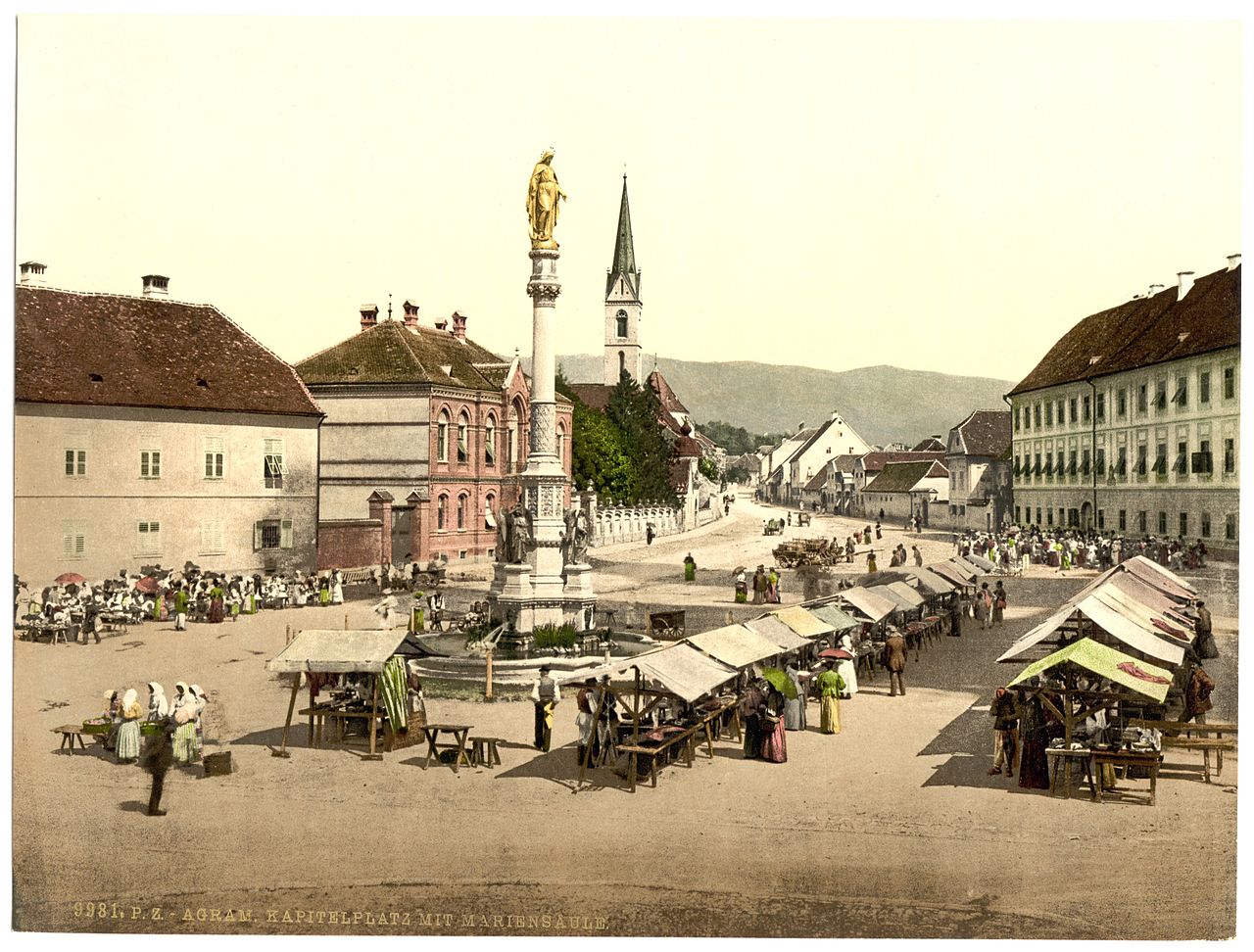 Kaptol, Zagreb in 1905, when almost every day looked like European Car Free Day
Kaptol, Zagreb in 1905, when almost every day looked like European Car Free Day
Tomorrow, Zagreb will return to a pace more familiar to former inhabitants as the city observes European Car Free Day. Motor vehicles will be banned from much of the city's centre between 8 am and 8 pm.
The area of the city centre observing European Car Free Day has the following boundaries; Trg bana Josipa Jelačića - Jurišićeva - Palmotićeva (western edge) - Boškovićeva (northern edge) - Hebrangova (northern edge) - Gundulićeva (eastern edge) - Ilica (northern edge) - Mesnička (eastern edge to Streljačka) - Mesnička - Demetrova - Ilirski trg - Radićeva - Trg bana Josipa Jelačića.
These streets form some of the oldest parts of Zagreb. Long have they been trodden by the pedestrians to whom they'll return tomorrow. Those travelling into the centre by car must park on the outskirts and take public transport into the heart of the city. Trams, taxis and buses will operate as normal.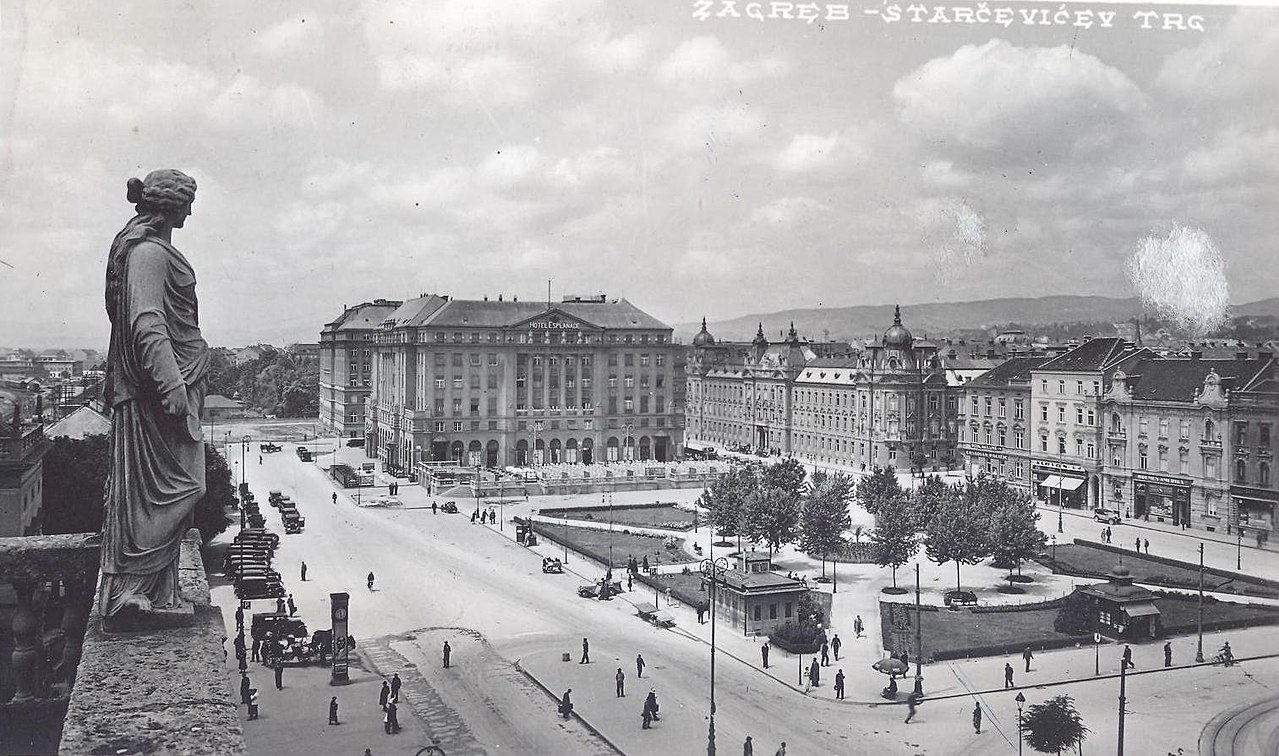 Cars began to be seen more regularly in Zagreb during the first half of the 20th-century. Not so much a European Car Free Day as a Croatian Tram Free Day - the city's famous tram network wasn't nearly so developed back then. The first city in Croatia to have trams was actually Osijek, who introduced a horse-pulled tram network in 1884.
Cars began to be seen more regularly in Zagreb during the first half of the 20th-century. Not so much a European Car Free Day as a Croatian Tram Free Day - the city's famous tram network wasn't nearly so developed back then. The first city in Croatia to have trams was actually Osijek, who introduced a horse-pulled tram network in 1884.
The observance of car-free days is actually over 65 years old, although originally they were introduced in response to oil crises, not for environmental reasons. The more modern reason for having such days is to return city streets to pedestrians. Car-free days have taken place independently in European nations since the mid-1990s, and it 2000 they became aligned on the fixed date of 22 September. European Car Free Day is also a car-free day in many other countries outside of Europe, although this continent is the only one to currently observe it throughout its boundaries.
All uncredited photos lie within the public domain.
For the latest travel info, bookmark our main travel info article, which is updated daily.
Read the Croatian Travel Update in your language - now available in 24 languages
Environmentally Conscious Living in Baranja - Popovac Eco School
June the 9th, 2020 - Popovac is a small village located under the only small hill in Baranja called Banovo brdo, nestled away in the north east of the country, between Osijek and the nearby Hungarian border. Popovac's small village school is not your average school, however...
Beautiful nature surrounds the area, the view of the green fields and dense forests is spectacular. It isn't something unusual to have the feeling that you need to protect nature when you see the beauty of Baranja.
Popovac is a place with one school, one shop, one post office but one big ecological soul. The Popovac primary school boasts the diamant status for participating in an International eco-schools programme. Our school made a note that the environment and eco-living is a very important part of school life where the students can learn new skills and ways to make the environment around them better and save the nature we're so lucky to have for the future.
Through many years of experience, the Popovac primary school made a lot of progress and included the local community in learning and becoming more aware of the basic environmental needs which can improve the lives of every single person living in the village of Popovac.
But, just what are eco-schools? International eco-schools is a programme designed to implement environmental education guidelines throughout educational institutions (primary and secondary schools, kindergartens and boarding schools, special needs schools and even colleges), and the National Coordinator of the Ecological School in the Republic of Croatia is the Lijepa naša Association.
The International eco-school programme was developed by the Foundation for Environmental Education (FEE) in response to the 1992 UN Conference. The programmew was officially launched back in 1994 in several European countries, including Denmark, Germany, Greece and the United Kingdom. Today, eco-schools are conducted in more than 64 countries around the world, connecting as many as 49,000 schools.
At the beginning of every school year, all of us at school think about ecological ideas for most of the school's subjects that we can implement into the curriculum. Through all these years, we managed to develop a lot. From day-long school projects to monthly and year projects, the idea spread further, getting involved in projects on the scale of Erasmus+ projects. The Popovac primary school's praiseworthy project is called ''Kids against plastic pollution''.
The programme is designed to present our ecological ideas to partner schools in Norway, Turkey and Romania. At the meetings, we presented our eco-school in beautiful Baranja, and we're very proud of being the only one with the status of eco-school. Now, in the distance learning era, we continue to be active virtually. We're not physically at the school, but the students made a short video from home about plastic pollution which included their own ecological messages.
This experience of needing to stay at home and stay safe made the students realise what they have learned through their activities at school and what they can do at home too. They are now aware of the amount of plastic that their family uses and could talk about how to reduce that problem. On a monthly basis, students of the Popovac primary school are continuing to collect plastic bottle lids and are in the national project to help purchase expensive medicine.
Every school teacher can be proud of the results that the younger generations achieve thanks to the environmental education presented to them in their school classrooms. They are aware that young generations are sensitive to environmental issues and by being active in that field, they promote environmental concern as a value and as a of life.
For the next school year, new goals will be set and the importance of protecting our environment will be presented to yet another new generation of children who will be the bearers of responsibility for the school and the wider local community. Local government representatives are also included into our actions and are supporting the school's ideas which are pushed by proactive young people who are going to live eco-friendly lives and think of the
future, and not only of themselves.
Text by Marijana Kuna
For more, follow Total Eco Croatia.
Vrgorac Mayor Prohibits Use of Disposable Plastic Packaging
The use of disposable or so-called single use plastic has become a common topic of conversation and is a frequent theme of all those engaged in attempting to preserve their local environment. Plastic pollution has also captured an enormous amount of attention, especially when it comes to human damage to the marine world. Vrgorac, a town in Split-Dalmatia County, has stepped up.
As Poslovni Dnevnik writes on the 20th of January, 2020, on Monday, Vrgorac Mayor Ante Pranic gave the directors of the town's numerous institutions instructions on the decision to prohibit the use of plastic packaging in the town's official institutions as well as at during Vrgorac's various events held throughout the course of the year, stating that they should be replaced by glass and also by much more environmentally friendly, biodegradable paper packaging.
In addition to the aforementioned, praiseworthy move, Vrgorac's mayor is also putting a stop to the consumption of bottled water at work meetings held within Vrgorac's local government and at during Town Council meetings. These bottles are all to easy to purchase, drink from and throw away without a second thought about how the wasted plastic builds up and negatively affects our local environment and our entire planet as a whole.
In the future, drinking water should be served in glass jars from Vrgorac's water supply network, removing the need for harmful plastic bottles which don't break down.
All establishments in Vrgorac will, owing to this decision, receive special waste disposal containers by Friday this week in order to facilitate the proper separation of all of the collected paper, to make sure things are recycled and disposed of in a safe and correct manner, with the least damage being inflicted on the local environment.
Make sure to follow our dedicated lifestyle page for much more. For more information on both official and unofficial ways Croatia works to protect its environment, give Total Eco Croatia a follow.
Hotel Adriatic is First Hotel in Croatia to Stop Using Disposable Plastic
All too often we hear about the dangerous levels of disposable plastic causing harm to the world's seas and oceans. With the EU and the EC finally taking a stronger stance against this wanton destruction of the environment by passing various laws on the use and disposal of plastic, as well as putting its foot down in regard to member states and their respective recycling policies, including Croatia, it seems we are (albeit slowly) finally getting somewhere.
Of course, Croatia is a lot slower than others, but some are making an excellent example of themselves through their own practices.
As Poslovni Dnevnik writes on the 23rd of April, 2019, the implementation of this initiative has actively involved the hotel's employees, suppliers, partners, as well as its guests and local residents who enjoy the hotel's numerous services on a daily basis.
Hotel Adriatic, which is part of the Maistra family, has decided to replace all disposable plastic items with alternatives, leading it to become the very first hotel in the Republic of Croatia to actively advocate for a cleaner working environment and a holiday without the use of disposable plastic waste, as was announced on Monday by this respected Rovinj hotel company.
"As the first hotel in Croatia with no disposable plastic, Hotel Adriatic aims to be the leader in innovation and sustainability and invites all of its employees to work responsibly in a way that will enable our guests to actively participate in this ecological action and a unique experience of the Adriatic sea," said Maistra's Tomislav Popović.
Last year, Hotel Adriatic started using substitute paper straws instead of the classic plastic ones, and by June this year, the hotel will cease using as much as eighty percent of disposable plastic products. By the end of the year, it aims to have completely removed it from use in all of its accommodation units, including its bars and restaurants.
By the end of 2019, Hotel Adriatic will only use biological cleansing agents and support cooperation with suppliers whose products are produced from natural, biological, ecologically acceptable and/or recycled materials.
Make sure to follow our dedicated lifestyle page for much more. If you're interested in how Croatia takes care of its beautiful environment, give Total Eco Croatia a follow, or see what initiatives, laws and movements there are in place in Croatia here.
JYSK Holds Action to Plant 10,000 Seeds on Medvednica
As Poslovni Dnevnik writes on the 15th of April, 2019, this past weekend, as part of a socially responsible project, the popular JYSK retail chain held a voluntary action to plant 10,000 European beech seedlings in two zones in the Medvednica Nature Park in Sljeme, above Zagreb, which have been most adversely affected by the weather's elements over last few years.
"We got together on Sljeme so that JYSK's volunteers, together with citizens, planted 10,000 beech seedlings donated by JYSK as part of our action. We're renewing the area in two zones of the Medvednica Nature Park, which died a couple of years ago after stormy weather.
''In addition to helping financially as a company through such projects, we want to help and in a different way to keep track of nature for the next generation,'' said Vesna Kukić Lončarić for JYSK Slovenia, Croatia, Bosnia and Herzegovina and Serbia.
The project was realised in cooperation with Croatian forests (Hrvatske šume), and the afforestation was carried out in the area around PD Risnjak within the Medvednica Nature Park. Despite the unfavourable weather conditions and even some snow, the afforestation action was supported by numerous citizens interested in the conservation of the environment who planted as many as 10,000 seedlings in the aforementioned locations. Among them was the famous Croatian singer Mirela Priselac Remi.
"We welcome JYSK's initiative and we'd like to thank them for their activities as part of their socially responsible business towards the forests. Such actions contribute to raising awareness among all citizens of the need for forest conservation and they are endangered by climate change and the irresponsible behaviour of individuals,'' she stated.
''Without the forests, there's no clean air nor is there any clean water, and such young and healthy forests as are sprouting here are our best allies in alleviating the consequences of climate change. There are multiple uses of forests, and only with responsible management can we manage to preserve them,'' said Damir Miškulin from Croatian forests.
For this project, JYSK collected funds from the sale of 50 percent of recycled plastic bags during the first three months of this year, which were donated for the purchase of seedlings for the purpose of afforestation. JYSK's objective is to raise public awareness of the importance of our forests and their development with a positive example, and continue to implement such projects throughout the year and throughout the whole of the Republic of Croatia.
Make sure to follow our dedicated lifestyle page for much more. If it's just the Croatian capital you're interested in, give Total Zagreb a follow, or check out Zagreb in a Page. Care about the environment? Follow Total Eco Croatia.
Want to see how Croatia works to protect its environment? Click here.
NP Krka Providing Books to Local Schools Through Praiseworthy Project
NP Krka is another one of those ''must visit'' places when in Croatia, and yes, there are many such destinations to be found here. The whole ''must see'' thing has become a little saturated over recent years, especially with the rise of self-proclaimed travel bloggers and social media influencers, however, there is much more to this stunning national park than just the ability to take artistic Instagram pictures.
NP Krka is involving itself in the education of school children in the Dalmatian county in which the park is situated through a praiseworthy project aimed at increasing kids' overall awareness of both protected areas and nature and the environment.
As Morski writes on the 3rd of April, 2019, the highly visited NP Krka actually launched the project "Let's fill up the school libraries" (Popunimo školske knjižnice), for primary and secondary schools of the Šibenik-Knin County back in 2007.
The aim of the project is to make the books published within the framework of this educational scope available to school-age children and other young people, so that they can contribute to their own respective awareness of the country's numerous protected areas and the need to take care of their surroundings, including the importance of the proper preservation of the environment.
Since back in 2007, VHS tapes and later on, DVDs covering a wide array of topics related to NP Krka and its environment and native wildlife and birds have been shared around numerous local schools within the aforementioned county in Dalmatia. In February this year, a total of 49 books were distributed to thirty-six primary and thirteen high schools in the county.
NP Krka's administration and staff believe that this year's gift to local schools will be used by students and their mentors and teachers not only as an additional teaching aid for the classroom but that it will also encourage children to go out and get to know and further explore the rich natural beauty and the cultural heritage of the beautiful NP Krka.
Make sure to follow our dedicated lifestyle page for much more.
Tomislav Ćorić Discusses Croatia's Aims in Renewable Energy in Bilbao
As Jasmina Trstenjak/Novac writes on the 2nd of April, 2019, the Republic of Croatia must, and is, turning more and more strongly towards using its own renewable energy sources, this was the main message of the Minister of Environmental Protection and Energy of Tomislav Ćorić at the Wind Europe 2019 Conference & Exhibition, held April from the 2nd to the 4th of this month in Bilbao, Spain.
It's been three and a half years since the historic COP 21 in Paris, which was one of the most important first steps towards a global low-carbon transition. The goal is to limit global warming below 2 degrees celsius, up to a maximum of 1.5 degrees celsius.
"Although we've done a lot since then, there are still many challenges ahead of us," Ćorić stated at the beginning of his speech on the subject, held at the largest and the most significant European event in the area of wind energy use, in which the Republic of Croatia participated for the very first time.
The conference is focused on clean energy for Europe and brings together key European institutions and the European economy in the wind industry, 8000 participants, 300 exhibitors from various countries and as many as 155 speakers, including Croatia's Tomislav Ćorić, who presented those present with Croatian experiences and further plans.
He recalled the fact that Croatia realised that, for security reasons, it has to turn much more towards its own sources of energy, primarily relying on hydropower, the sun and the wind.
''We will intensively support the development of geothermal, biomass and biogas projects, addressing the needs of the industry, agriculture, and all those sectors that need the synergistic effect of electricity and heat production in a highly efficient manner,'' he continued by briefly outlining Croatia's energy plans, adding that a very important segment of energy transition is the increased share of electricity in transport, such as in heating and cooling systems.
Additional space can be seen in Croatian tourism, which accounts for almost 20 percent of the country's GDP, and has a disadvantageous relationship between the supply and demand of electricity in summer tourist months, so we can see the need for, and the opportunity to introduce a micro solar system. Tourism will profit even more, Tomislav Ćorić believes, with the electrification of transport, he therefore believes that it would be good to open the story of corporate contracts on the purchase of electricity in tourism.
Adding to the issue of tourism, he pointed out that Croatia is known for its more than 1,000 islands and that the island's dependence on energy imports could be reduced by the greater use of renewable sources and innovative energy systems, which could also lead to welcome cost reductions. Accordingly, the European Commission has started its initiative on the energy transition of European islands with a view to seeing them eventually become sustainable, and Croatia is aiming to continue this work during the Croatian Presidency of the Council of Europe, so as to continue to ensure the development of the energy transition strategy on Croatia's many islands.
''Among the 26 European islands are the Cres-Lošinj archipelago and Korčula, Brač and Hvar. In the first phase, Cres will make its energy transition plan this summer, and next year, Hvar, Brač and Korčula will do the same,'' the minister stated.
He also took the opportunity to announce Croatia's new energy strategy which is being brought in as early as this year, in which one of the key goals will be to increase the production of both wind and sun-sourced electricity.
''In line with this, we expect more renewable energy sources than in the past ten years. The goal is to have three times more wind and twenty times more solar energy in the next ten years. With the wind and other choices of renewable energy, we will achieve 32 percent of our total energy needs by 2030 and at least 56 percent by 2050, and the transition to renewable energy will reduce harmful emissions. We believe that further growth in green energy investment will also affect the country's development itself, as well as [provide] new employment and industry growth,'' concluded Minister Tomislav Ćorić at the Bilbao conference.
Maja Pokrovac, the director of the Croatia Renewable Energy Association, added that with the aim of achieving 32 percent of renewable sources, Croatia will contribute 36.4 percent according to the National Climate Action Plan and Action Plan sent to Brussels in late 2018, while the director of WindEurope, Giles Dickson, expressed his pleasant surprise with the fact that Croatia is the most optimistic country in JI Europe when it comes to the share of renewables in consumption.
Make sure to follow our dedicated politics and lifestyle pages for much more. If it's the environment and ecology in Croatia you're interested in, give Total Eco Croatia a follow.
Click here for the original article by Jasmina Trstenjak for Novac/Jutarnji
Energetic Transition Process Begins on Croatian Islands
The Clean Energy Secretariat on EU islands held an energy transition workshop attended by representatives from the Croatian islands of Brač, Cres, Hvar, Korčula and Lošinj last week.
As Morski writes on the 18th of March, 2019, Croatian islands officially launched an energetic transition up and down the coast. Back at the beginning of February this year, the Secretariat's initiative for clean energy for the EU's islands, which was initiated by the Croatian MEP Tonino Picula, announced a list of 26 European island communities that will receive expert and advisory support for the energy transition strategy in the coming period, writes Pokret otoka (Island movement).
Among the 26 selected islands are four Croatian island communities: The Cres-Lošinj archipelago and Brač, Hvar and Korčula. The two-day workshop, organised with the cooperation of the cities of Cres and Mali Lošinj, the OTRA Island Development Agency, LAG Kvarner Islands and Pokret otoka (Island movement) as local partners, gathered forty representatives of selected islands that, with expert assistance, will set the first foundations of energy transition plans. The gathering took place last weekend and this is the first of a total of ten workshops which will be carried out by the Secretariat for the EU islands in the forthcoming period.
Representatives of transition teams from all five islands participated in the workshop in Mali Lošinj, which will work on strategy development in cooperation with partners and experts in the coming period. The goal of the two-day workshop, besides transferring knowledge and experiences from different areas, has also been gathering, networking and strengthening the island's stakeholders for further cooperation in the energy transition process.
The Cres-Lošinj archipelago, set as one of the six European pilot projects, should have its energy transition plan should be ready by the end of summer 2019. The remaining twenty islands, including Brač, Hvar and Korčula, will have their plans in place by 2020. Despite the abundance of renewable energy sources, many islands currently depend on fossil fuels and energy imports from the mainland. The transition to clean energy can help the islands not only become more self-reliant and prosperous, but also open up new opportunities for employment in their communities and encourage further direct development of the islands.
The other islands that will be pilot projects in the initiative are the Irish Islands, Sifnos in Greece, Salina in Italy, La Palma in Spain and Culatra in Portugal. Twenty other islands will follow their development and enjoy the suppor of experts in the same direction. An expert team of the Secretariat for the islands will produce guides to initiate energy transition, encourage community involvement and discuss project financing in the forthcoming period.
Croatian islanders will have the opportunity to cooperate with each other, create a network of good practices, educate themselves and and participate in various events. It is important to emphasise the fact that the whole initiative is based on the "bottom up" approach, and the primary principle of transition success is based on the involvement of all local community stakeholders, which include the representatives of local self-government units, entrepreneurs, educational institutions, and of course civic initiatives.
Make sure to follow our dedicated lifestyle page for more information on Croatian islands and much, much more.
Click here for the original article by Ana Marija Jakas for Pokret otoka (Island movement)
Sustainable Community, Nove Starine Park in Solin Celebrates 15 Years
March 6th 2019; the talented team of writers at TCN is ever-growing and we are happy to welcome number 129 to the ranks. Mischa Pearson is best known for founding her multi-award-winning NGO fighting food waste and hunger in England. She was both nominated and recognised as one of the top most influential women in Suffolk where she grew up, and currently lives in the city of Split. Mischa has since been sustainably travelling Europe with her home educated son and their dog. Her first piece for TCN is naturally on a sustainable topic, the Nove Starine Park in Solin celebrates 15 years; Mischa caught up with the founder to learn a little more.
Welcome Mischa; if you are interested in writing for Total Croatia News, please contact us at This email address is being protected from spambots. You need JavaScript enabled to view it.
“If you go down to the woods today, you’re sure of a big surprise”. The old Anne Murray song might suggest a Teddy Bear or two, but it’s not that which causes a stir in the old forest, the Nove Starine Park...
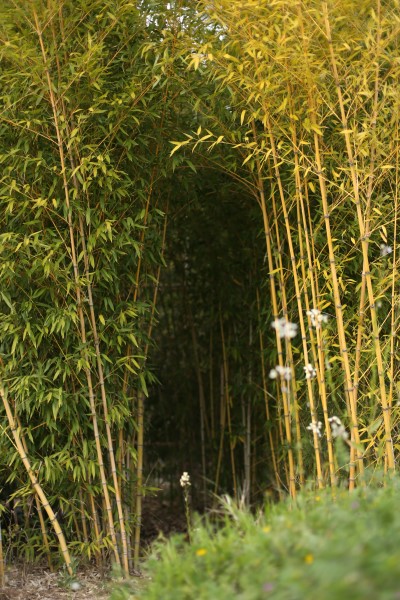
Photo Credit: Srđan Tutić
About the Nove Starine Park in Solin
Sculpture and concept artist Ivan Tokić turns his ambitions to the sustainable project - Nove Starine Park development, with one 10,000 square meter forest in Solin. Set deep in the heart of mother natures dwelling place and neighbouring the ancient city of Salona --capital to the Roman province of Dalmatia, and birthplace to Emperor Diocletian lies the Nove Starine Park; home to this emerging artistic community.
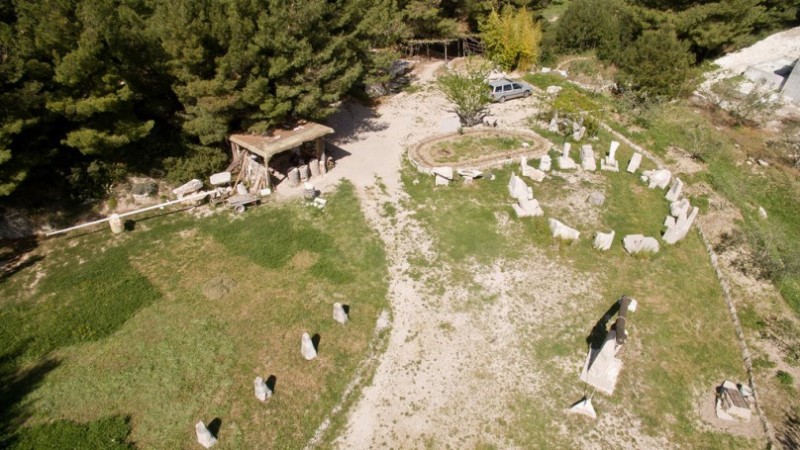
Photo Credit: Ivan Tokić, the idyllic setting of Nove Starine Park
Nove Starine Park boasts everything from an outdoor cinema to a sauna and climbing gym, set amongst old pines stretched from a bed of limestone soil. Offering respite and shared meals to an array of international travellers willing to volunteer their skills, often escaping the city life in countries such as France, Holland and Germany; the sanctuary has taken on a charm unlike any other near the Adriatic coastline.
Lochlan, who stayed with Ivan at Nove Starine Park for three weeks in late 2017 described it as a "diamond tucked away in a beautiful forest reserve".
What inspired the development, and what's in store for the future?
"I started Nove Starine Park almost by accident, it was totally spontaneous and I actually wanted to be an actor prior to this" Ivan explains, as he walks the grounds. “I didn’t have food, so I grew some, and though deep into the philosophy of healthy soil, I used mostly intuition and communication to understand the natural environment. I call it intuition agriculture”.
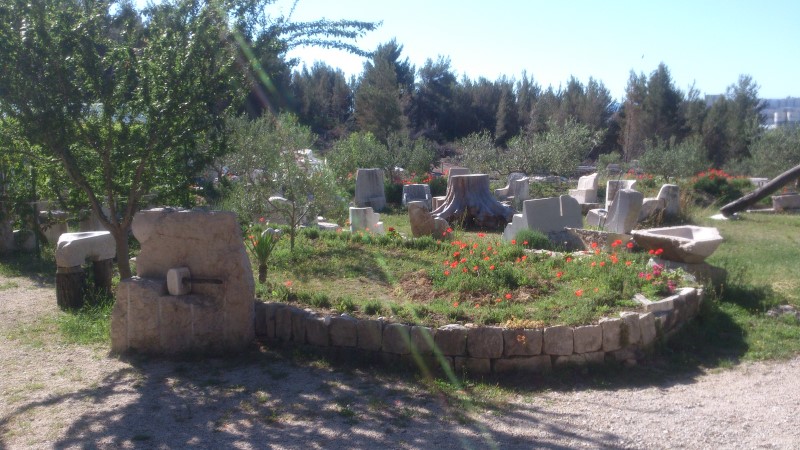
Photo Credit: Ivan Tokić
Ivan hopes to host more travellers and local community interested in the project, welcoming those who would be willing to work for board. Individuals specifically adept with social media and fundraising, armed with motivation to bring new life to its collaborative design are encouraged to get in touch through the Nove Starine Facebook page.
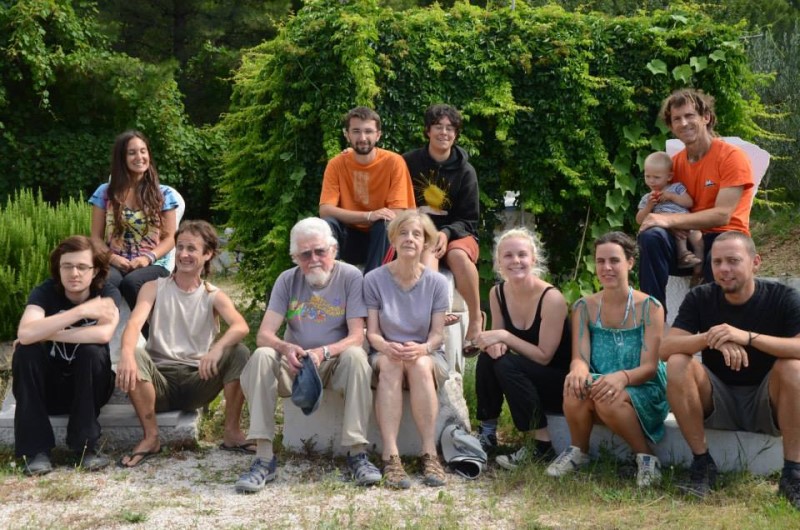
Photo Credit: Ivan Tokić, international visitors and friends of Nove Starine Park
“We have many projects and ideas, and because there is so much space and freedom here, our only limitation is finding the right helping hands to make it happen. We have an outdoor cinema on a stage that would greatly benefit from some experienced minds, to perhaps take over for the summer months and put on some events/evenings.
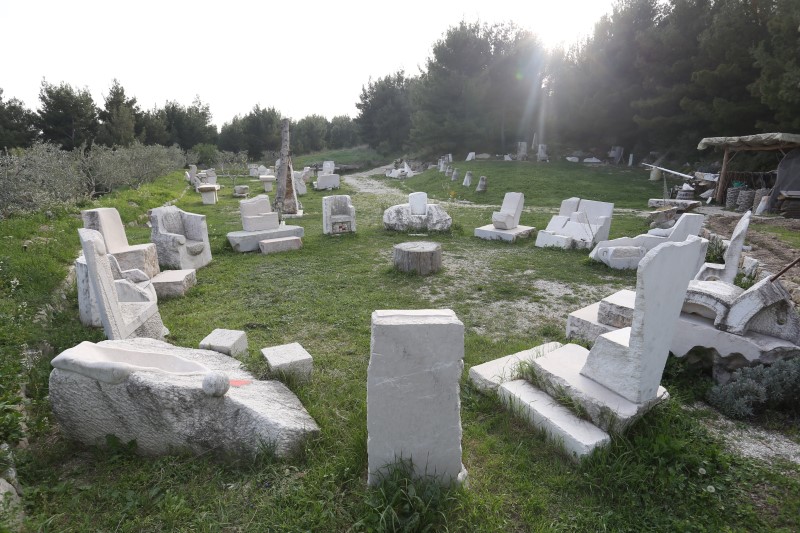
Photo Credit: Ivan Tokić

Photo Credit: Srđan Tutić
It's really important that the local people are invited to be a part of what is happening here, too. We need all the support we can get to be successful.”
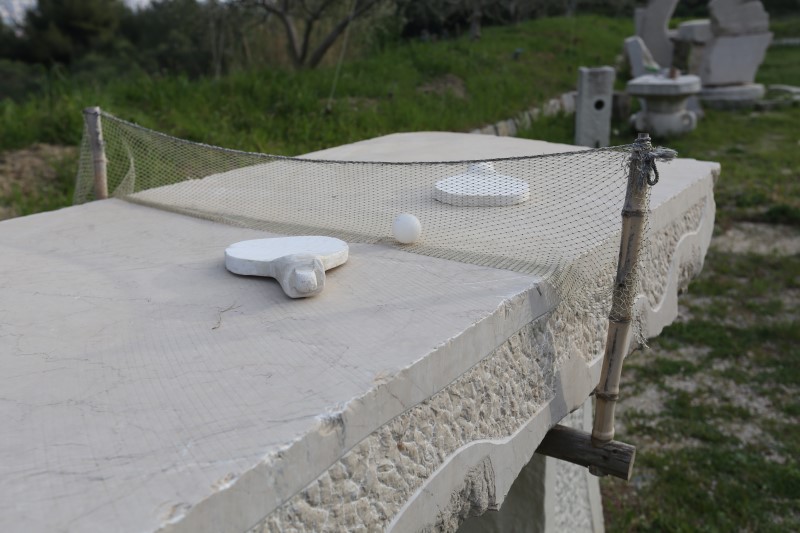
Photo Credit: Srđan Tutić
Nostalgic for times spent living in the thick of Suffolk's oak and hornbeam, framing the picturesque Norfolk border of England, I quickly found myself imagining the off-grid pace once more; away from the Mittel-Europe grind of concrete jungles and densely carbonated air. In balance though, the city life is convenient, and if you've ever stripped naked and stood in an oversized woodland with a camper’s shower, hung precariously on a branch, thrashing a sack of unforgivingly cold water over you, you'll know the simple life, although whimsical and romantic in its essence, is not for the faint-hearted.

Photo Credit: Srđan Tutić
The project plans to continue in its mission to demonstrate sustainable practices symbiotic with the natural environment, alongside a stone carving school and traditional olive pressing on-site starting October this year. Ivan finished by saying “the whole thing [project] has been a huge learning process, it’s really not about the destination, just the process.”
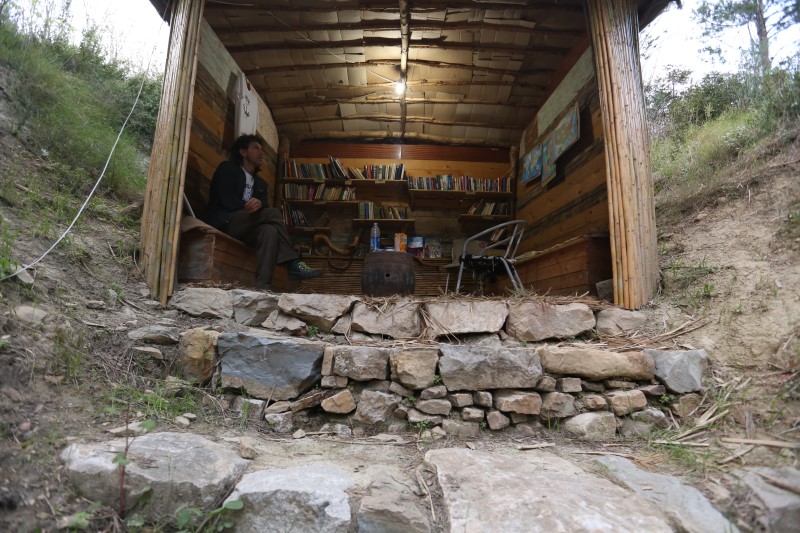
Photo Credit: Srđan Tutić
For more news from Split and surrounding, visit Total Split.


